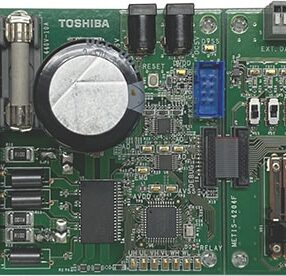
Massive electronics imports and their debilitating impact on trade balance have long pressured the country’s current account, but a spurt in electronics exports since last year has pleasantly surprised policymakers.
Having jumped 39% year-on-year to a record $8.9 billion in FY19, electronics exports surged 28% y-o-y in April to $715 million and an impressive 51% in May to $911 million, according to “quick estimates” by the commerce ministry. In contrast, total goods exports grew just 0.6% in April and 3.9% in May.
Exports of telecom instruments, including mobile phones, jumped almost 70% to $195.3 million in April (up to which segregated data are available), while electronics instruments saw an over 27% rise to $228.3 million — albeit on low bases.
“The electronics segment is turning out to be one of the biggest drivers of our merchandise export growth, as far as high-value categories are concerned. It could be a success story of Make in India, as local assembly/production has gone up, leading to higher exports,” a senior commerce ministry official told FE.
For instance, Samsung last year expanded its mobile phone factory in Noida, touted to be the world’s largest, to double its capacity to make cell phones from 68 million units to 120 million units a year, in a phase-wise expansion that will be completed by 2020.

Around 30% of these phones are targeted to be exported, according to a senior industry executive. Although it’s still time before Samsung is able to ship out the targeted 30%, a substantial number of phones, no doubt, is being exported. However, local value addition still remains low, as most of the components are imported in completely or semi knocked-down conditions and are shipped out after assembly here, according to industry executives.
Importantly, the surge in electronics imports — the largest contributor to the country’s trade deficit after petroleum in FY19 — lost some pace this fiscal, albeit on a high base. Such imports rose 4% y-o-y in April to $4.3 billion before contracting 3.2% to $4.8 billion in May. In FY19, electronics imports had scaled a record peak of around $56 billion.
Analysts have pointed out that the nature of electronics imports, especially in the mobile phone segment, is changing. Purchases of components from overseas for local assembly/manufacturing are rising at a faster pace than those of completely-built units (CBUs).
Telecom instruments made up for roughly a third of overall electronics imports in FY19, followed by electronic components (28%), computer hardware and peripherals (16%), electronic instruments (14%) and consumer electronics (9%).
In FY19, exports of telecom instruments (including mobile phones) had jumped a massive 125% year-on-year to $2.5 billion — the highest since FY14, just before the Nokia plant closure — and emerged as the largest segment within the electronics exports category. However, as has been pointed out by experts, such exports are still far below potential. In fact, from $3.06 billion in FY14, telecom instrument exports crashed to just $1.07 billion in FY15, mainly due to the Nokia plant closure (in October 2014), show the DGCIS data.
According to an ICEA-McKinsey report, the latest resurgence in mobile manufacturing was built on the back of strong domestic demand, with the introduction of the Phased Manufacturing Programme encouraging import substitution. Between 2014 and 2017, the Indian smartphone market grew over 37% in value per annum, from $9 billion to $22 billion. In volume term, sales of smartphones rose from 70 million units in 2014 to 150 million units in 2017.
Pankaj Mohindroo, chairman of the India Cellular & Electronics Association, said despite the recent spurt in exports, India’s share in global electronics trade is less than even 1%. Our electronics exports this fiscal may jump by 70-100% only if export incentives under the Merchandise Exports from India Scheme (MEIS) continues or a suitable alternative is implemented. (MEIS and other export subsidy schemes have been challenged at the WTO).
[“source=financialexpress”]



























